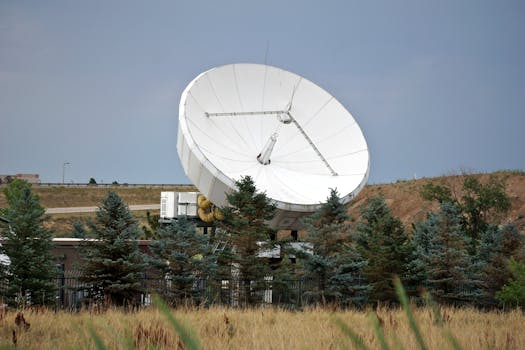The Future of Connectivity: Latest Breakthroughs in Satellite Telecommunications

The Future of Connectivity: Latest Breakthroughs in Satellite Telecommunications
The Future of Connectivity: Latest Breakthroughs in Satellite Telecommunications are transforming the way we live, work, and communicate. Satellite telecommunications have come a long way since the launch of the first commercial communications satellite, Intelsat 1, in 1965. Today, satellite telecommunications play a critical role in providing connectivity to remote and underserved areas, supporting global communications, and enabling a wide range of applications, from navigation and weather forecasting to remote sensing and Earth observation.
Satellite telecommunications offer a unique combination of benefits, including global coverage, reliability, and flexibility. Unlike traditional fiber-optic and wireless networks, satellite telecommunications are not limited by geographical constraints, making them an ideal solution for connecting remote and rural areas. Additionally, satellite telecommunications can provide backup connectivity during natural disasters or network outages, ensuring that critical communications are maintained.
Advances in Satellite Technology
Recent advances in satellite technology have significantly improved the performance, capacity, and cost-effectiveness of satellite telecommunications. Some of the key developments include the launch of high-throughput satellites (HTS), which offer faster data rates and higher capacity than traditional satellites. HTS satellites use advanced technologies such as spot beams and frequency reuse to increase bandwidth and reduce latency. For example, the Intelsat EpicNG satellite, launched in 2016, offers data rates of up to 25 Gbps and supports a wide range of applications, including broadband, mobility, and government services.
Another significant development is the emergence of low-Earth orbit (LEO) satellites, which operate at altitudes of around 1,200 km, compared to traditional geostationary satellites, which operate at altitudes of around 36,000 km. LEO satellites offer lower latency, higher data rates, and improved reliability, making them ideal for applications such as real-time communications, navigation, and remote sensing. Companies such as OneWeb, SpaceX, and Amazon Kuiper Systems are launching constellations of LEO satellites to provide global broadband coverage and support a wide range of applications.
Applications of Satellite Telecommunications
Satellite telecommunications support a wide range of applications, from consumer broadband and mobility to government services and remote sensing. Some of the key applications include:
Consumer broadband: Satellite telecommunications provide broadband access to remote and underserved areas, enabling consumers to access the internet, stream video content, and use online services. For example, HughesNet, a leading satellite broadband provider, offers plans with data rates of up to 25 Mbps and supports a wide range of applications, including online gaming, video streaming, and social media.
Mobility: Satellite telecommunications support mobile networks, enabling connectivity on-the-move and in remote areas. For example, the Global Xpress network, operated by Inmarsat, provides mobile broadband services to governments, enterprises, and consumers, supporting applications such as voice, data, and video communications.
Government services: Satellite telecommunications support a wide range of government services, including defense, emergency response, and remote sensing. For example, the US Department of Defense uses satellite telecommunications to support military operations, including communications, navigation, and surveillance.
Challenges and Opportunities
Despite the many benefits and advances in satellite telecommunications, there are still challenges to be addressed, including regulatory frameworks, spectrum allocation, and cybersecurity. The regulatory framework for satellite telecommunications is complex and varies by country, making it challenging to deploy and operate satellite systems globally. Additionally, the allocation of spectrum for satellite telecommunications is limited, and the demand for spectrum is increasing, driven by the growing need for broadband and mobile services.
Cybersecurity is another critical challenge facing satellite telecommunications. Satellite systems are vulnerable to cyber threats, including hacking, jamming, and spoofing. To address these challenges, satellite operators and manufacturers are implementing advanced security measures, including encryption, firewalls, and intrusion detection systems.
However, the opportunities presented by satellite telecommunications far outweigh the challenges. With the growing demand for broadband and mobile services, satellite telecommunications are playing an increasingly important role in providing connectivity to remote and underserved areas. Additionally, the development of new applications, such as the Internet of Things (IoT) and autonomous vehicles, is driving the need for satellite telecommunications, enabling devices and vehicles to communicate and exchange data in real-time.




